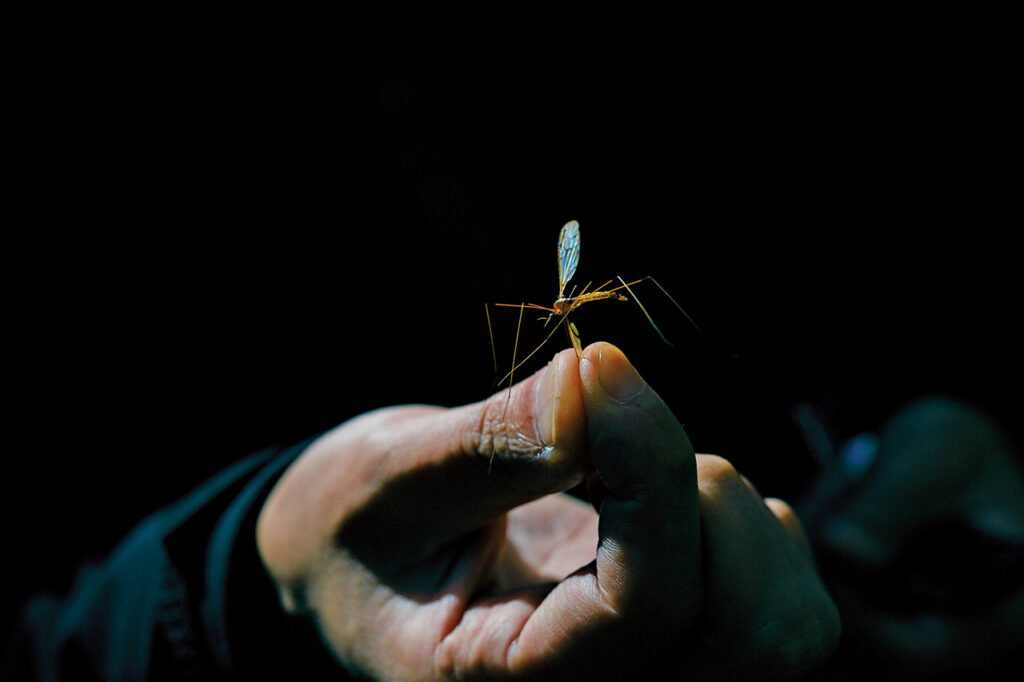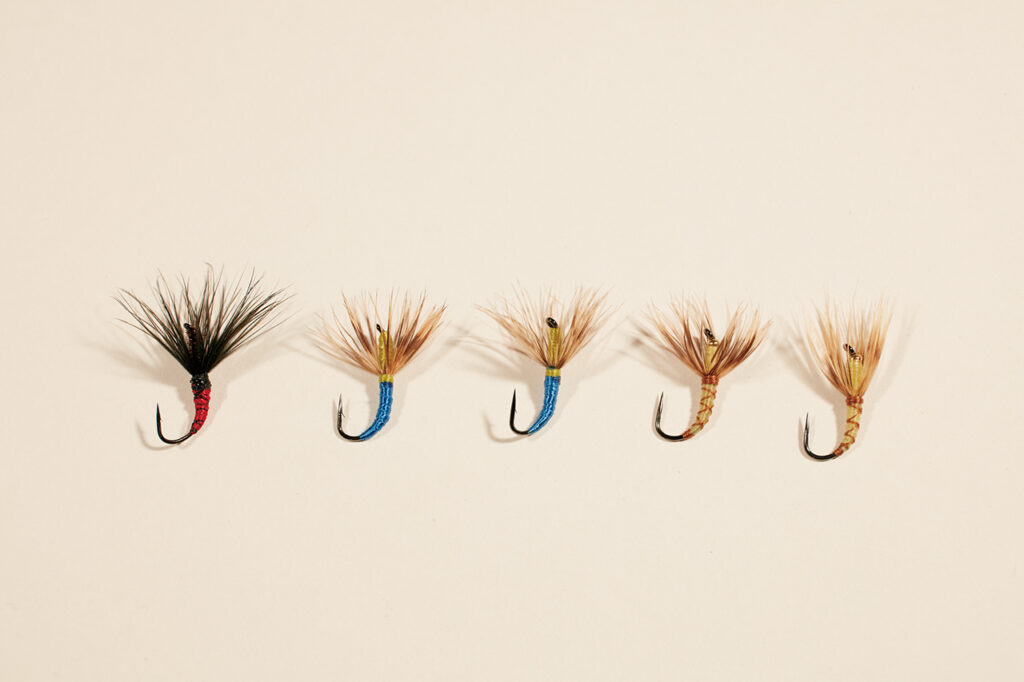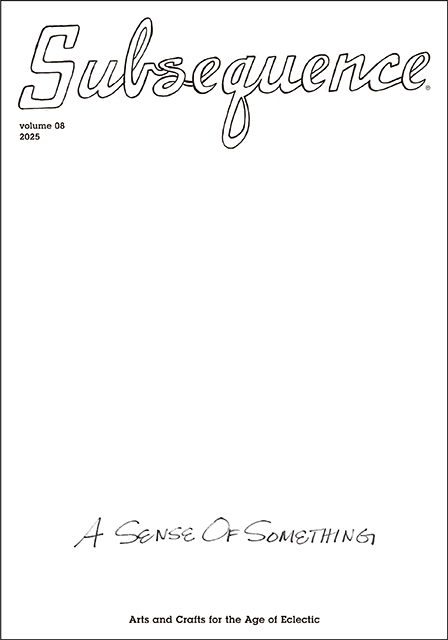
Getaway
Text: Kosuke Ide
Photo: Keisuke Fukamizu
2023.02.02

Japan may be an island nation, where the sea is never far away, but it’s also a nation of mountains, with massive peaks forming the spine of the archipelago. This mountainous terrain has long been home to the Matagi of Tohoku and Kitakanto, and the skilled anglers who catch the iwana and amago that make their home in secluded mountain streams. These anglers gave us tenkara fishing, a unique fly fishing method, along with a panoply of artificial flies that vary in design from place to place. We asked one of today’s artisan fly experts for insight on this rich cultural tradition.
“Fly fishing” consists of using artificial flies disguised as insects to catch trout, which feed on aquatic insects such as mayflies that fly around the surface of rivers. This style of angling has a long and extensive history. The details of its origins are not certain, but Roman author Claudius Aelianus writes in his book on natural history that flies were used to catch fish by the Macedonians. Fly fishing was also widely popular among the noble class in England during the seventeenth century, as described in Izaak Walton’s The Compleat Angler (1653) and John Dennys’s The Secrets of Angling (1652), two literary masterpieces on the art of fishing.
Towards the end of the nineteenth century, the gear and techniques continued to evolve. The fishing rods, once made from wood, became smooth bamboo, while the fishing flies, which had been made from horsetail hair, shifted to silk. In the United States, fly fishing continued to develop independently from its origins. Since the mid-twentieth century, the United States has been at the frontline of the field, thanks in part to the introduction of new technology like carbon rods and nylon lines.


What we typically call fly fishing has its roots in Western Europe, but Japan has long been home to a unique tradition of fishing using artificial flies. During the Edo period, when a style of fly fishing was widely practiced in the rivers near villages to catch ayu, a different style of fishing using flies was practiced in mountain streams, in order to catch fish such as iwana and yamame. Today, this latter style is called “tenkara fishing.”
There are many theories about the birthplace and origins of tenkara fishing. While the details remain shrouded in mystery, we do know that Japanese-style fly fishing in mountain streams has only been referred to as tenkara since the mid-1960s. In any case, what matters is that while fly fishing was widely enjoyed in England primarily as a hobby, tenkara fishing was passed down in Japan by working fishermen and hunters who sold the fish they caught to mountain lodges. Although there are huge holes in our information and historical knowledge of the equipment used for tenkara fishing, many of the techniques developed by anglers who dwelled in the mountains have been passed down through the generations.
Unlike fly fishing, where the rods are outfitted with reels, a simple rod and string are used for the tenkara tackle. Originally, the rods were made from bamboo, while the lines were made with horsetail hair and the various parts of the flies were made from the feathers of birds such as copper pheasants, green pheasants and peacocks, or from fibers extracted from flowering ferns. These fishing flies were constantly being developed and perfected through trial and error as “trade secrets” by fly craftsmen all over Japan, and were only passed down to a select handful of people. Today, these rare fishing flies are referred to as “artisan flies.”

Mr. Takaaki Sasaki, owner of the online shop densyokebari.com, an artisan fly store he manages in Koga, Ibaraki Prefecture, is a bona fide artisan fly expert who collects information about traditional fishing flies from all over Japan, while also crafting these traditional flies for sale in his shop. Born and raised near the Watarase River, a major waterway in the Kitakanto region of Japan, Sasaki fell in love with fishing at a young age. “When I was a child my uncle had these beautiful old fishing flies. I was mesmerized by their different colors. I knew that someday I wanted to try catching fish with flies like that,” he says. As fly fishing requires highly specialized knowledge, experience, and technique, Sasaki explains that he was “taught by older fishermen about the art of fly fishing and began investigating and learning more about the old flies on my own.”
As mentioned earlier, information regarding traditional fishing flies was kept under wraps and unavailable to the general public, making it next to impossible to learn more about traditional fishing flies, since only experienced fishermen, well-versed in the ecology of the fish in their vicinity, knew the secrets of their craft. “I studied up on traditional flies by reading the few documents that have been preserved over time and by talking with local fishermen. These flies have been passed down with great care, but that world remains highly secretive, so initially it was quite difficult to even get people to show them to me. Over time, I was able to earn the trust of a few individuals, who finally shared with me the materials they used to make and assemble the flies they knew.”


Most of the information was passed down through word of mouth. The earlier forms of the flies remain unclear, since few antique flies have survived.
“For example, the ‘Gorochi fly,’ which was commonly used by fishermen at Lake Chuzenji in Nikko, was made from the breast feathers of female Japanese pheasants and tied together using thread made from the fibers of flowering ferns. There is only one known Gorochi fly in existence, on exhibit at a museum, but no one knows whether it’s the real thing or who made it and when. The only way to determine its authenticity would be to match it with a description in an old document. There are also flies called ‘Kingoma’ and ‘Gingoma,’ which were made from the feathers of Japanese bantams and also used in the Nikko region. These two were discovered years ago at an antique market.”


Many traditional fishing flies were made with materials native to the regions where they came from, and there are countless different types of fishing flies with unique characteristics throughout Japan.
“The ‘Togata fly,’ used by fishermen in the Sumikawa region of Miyagi Prefecture, is an extremely unique example. A fisherman friend of mine who I had known for many years taught me that instead of using tail feathers of copper pheasants, the Togata flies were made using the bone marrow of the pheasants exuded when the feathers are plucked. At Watarase River in Tochigi Prefecture, best known for being the home of the Ashio Copper Mine, the fishing flies are tied with copper wire instead of the standard thread, to give them extra weight.”


Utilizing knowledge and experience gained over the years, Sasaki spends his days manufacturing fishing flies inspired by tradition. Stabilizing a hook with a fly-tying vise, he carefully ties together rare materials using silk thread to create beautifully handcrafted fishing flies.
“I put my own twist on the traditional fishing flies and sell them as originals. In recent years, many cheap knockoffs have been circulating over the internet, so I pay careful attention to prevent imitation fishing flies from being sold.”
Utilizing local plants and animals, many of the traditional fishing flies refined over the years were practical, efficient implements used by working fishermen to catch as many fish as possible in short periods of time, while avoiding damage to precious fish in the process. On the other hand, although manufactured strictly as fishing tools, their physical appearance and the subtle details incorporated into their designs are, in Sasaki’s words, “unbelievably elaborate and refined.”
“To be honest, if you use an authentic fishing fly and have the proper technique, you can catch fish using any type of fly, but these old-school fishermen took great pride in the beauty and subtle functionality of their tools. Not so they could show them off to others, though. They made these beautiful, perfect tools especially and exclusively for their own personal use. To me, this philosophy is the epitome of cool.”



Fishing using Japanese-style flies was relatively common in various regions until the 1950s, but extensive pollution during the period of high economic growth decimated the fish populations of Japan’s rivers, and fish such as iwana and yamame are now primarily farm-raised. The changing times ultimately led to a temporary disappearance of the tenkara fishing technique. However, in recent years tenkara fishing is showing signs of a revival. “Today, tenkara fishing is beginning to become more and more popular in the United States, the place to go for fly fishing,” says Daisuke Tsuchiya, owner of “GROUNDSTORE,” a specialty shop in Chofu, Tokyo that carries tenkara-themed clothing and outdoor gear. Rod maker “TENKARA USA,” also carried by the store, was founded in Boulder, Colorado in 2009. “The idea of tenkara fishing, which uses lightweight and simple systems to catch fish, has become very popular among backpackers and minimalists who are extremely particular about their gear.”
Tenkara fishing is the product of thorough optimization, developed and perfected by generations of working fishermen. Its functional beauty is now making a comeback on the world stage.(Reprinted from Subsequeznce vol. 2)
SASAKI DENSYO KEBARI (Sasaki Artisan Flies)
https://densyo-kebari.com/
Getaway
Atelier in Hatsudai
2025.10.23

Getaway
Chinese tea at Kitashirakawa in Kyoto
2025.06.09

Getaway
108 matchboxes
2025.05.14

Getaway
The pleasant combinations of Descanso Gardens
2025.03.26


volume 08
2025-1st

Bilingual Japanese and English
260 × 372mm 148P
Release date: December 13, 2025